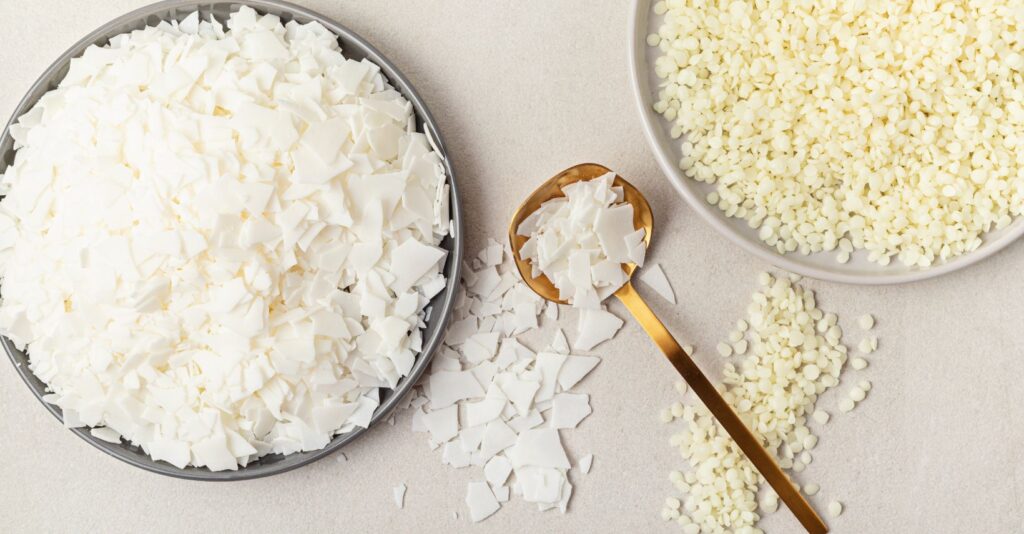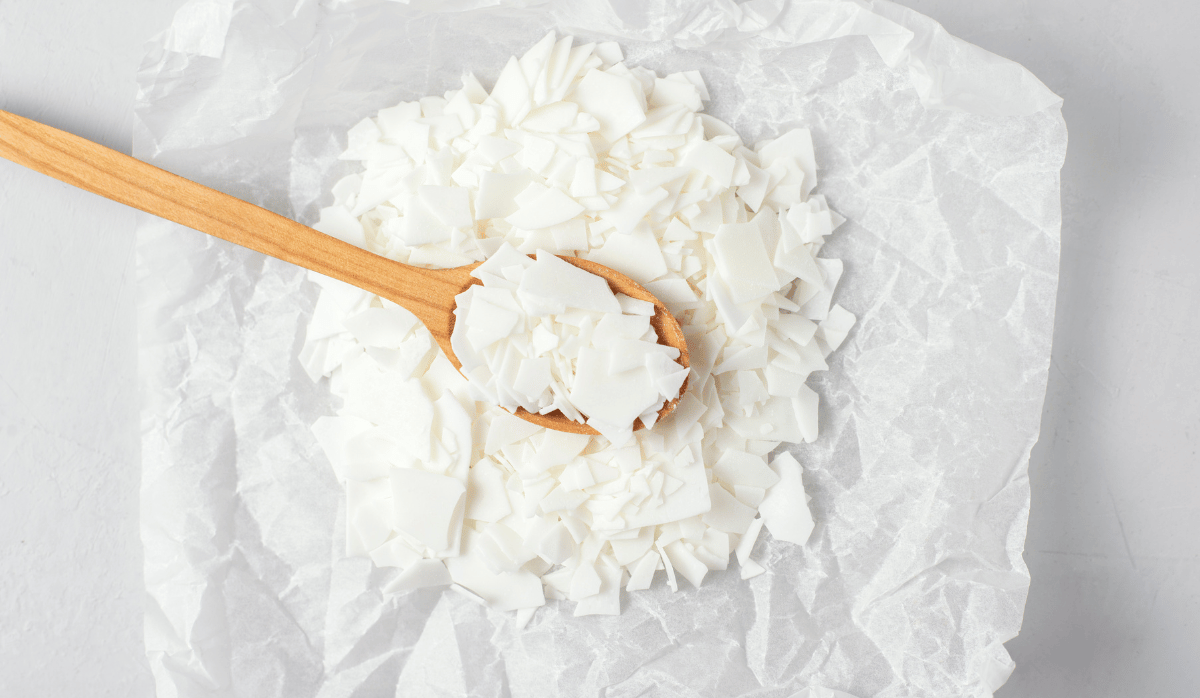Creating Beautiful Candles with GW 464 Soy Wax
Candle making is a popular hobby that allows crafters to create beautiful and unique candles for personal use or as gifts for loved ones. One type of wax that is commonly used in candle making is GW 464 Soy Wax. This article will provide a comprehensive guide on how to create stunning candles using GW 464 Soy Wax.
Understanding the Basics of GW 464 Soy Wax
Before delving into the candle making process, it is important to have a good understanding of what GW 464 Soy Wax is. GW 464 Soy Wax is a type of soy wax specifically designed for candle making. It is derived from soybean oil and is known for its clean burning properties.
What is GW 464 Soy Wax?
GW 464 Soy Wax is made from soybean oil, a renewable resource that is both sustainable and eco-friendly. It is a popular choice among candle makers due to its ability to hold fragrance and color well. Additionally, it has a lower melting point compared to other waxes, which makes it easier to work with.
Derived from soybeans, GW 464 Soy Wax undergoes a process where the oil is hydrogenated to create a solid substance suitable for candle making. This wax is biodegradable, making it an environmentally conscious choice for crafters who prioritize sustainability in their creations.

Benefits of Using GW 464 Soy Wax for Candle Making
There are several benefits to using GW 464 Soy Wax for candle making. Firstly, it produces a clean and even burn, ensuring that the candle lasts longer and provides a consistent fragrance throughout its burn time. Secondly, it has a great scent throw, meaning that it releases the fragrance into the surrounding environment effectively. Lastly, it is a natural and renewable resource, making it a more sustainable option compared to other types of waxes.
Due to its natural origins, GW 464 Soy Wax is free from toxins and harmful chemicals often found in paraffin-based candles. This makes it a healthier choice for both the environment and those who enjoy the ambiance of scented candles in their homes. Additionally, the clean-burning properties of soy wax result in minimal soot production, reducing indoor air pollution and keeping candle containers cleaner for longer periods.
Preparing Your Workspace for Candle Making
Preparing your workspace is essential to ensure a smooth candle making process and to prioritize safety. Creating a dedicated area for your candle making endeavors not only helps in organizing your materials but also sets the stage for a creative and productive experience.
Consider setting up your candle making space near a window to allow for natural light and ventilation. A clean and clutter-free workspace will not only boost your efficiency but also create a calming environment for your creative process.
Necessary Tools and Equipment
Before you start making candles, gather all the necessary tools and equipment. This includes a double boiler or a melting pot, a thermometer, a stirring utensil, a heat source, candle molds or containers, wicks, fragrance oils, and candle dyes. Having all these items readily available will make the candle making process efficient and organized.
It’s also beneficial to have a designated storage area for your candle making supplies. Proper organization will not only save you time searching for materials but also help in maintaining the quality of your ingredients.
Safety Measures to Consider
When working with hot wax, safety should always be a priority. Make sure to wear protective clothing, such as gloves and safety goggles, to prevent any accidents or injuries. Additionally, work in a well-ventilated area to avoid inhaling any fumes. Keep a fire extinguisher nearby and never leave melting wax unattended. Find more about injuries on https://www.health.harvard.edu/newsletter_article/treating-sports-injuries
Creating a safety checklist before starting your candle making process can help in ensuring that all necessary precautions are taken. Regularly inspecting your equipment and maintaining a clean workspace are key practices in upholding a safe candle making environment.
Step-by-Step Guide to Making Candles with GW 464 Soy Wax
Now that you have gathered all the necessary tools and prepared your workspace, it’s time to dive into the candle making process with GW 464 Soy Wax.
Before we proceed with the candle making process, let’s delve a bit into the background of GW 464 Soy Wax. This particular type of soy wax is known for its excellent scent throw and smooth finish. It is a favorite among candle makers for its ability to hold a high fragrance load and produce clean-burning candles. Additionally, GW 464 Soy Wax is derived from soybean oil, making it a renewable and eco-friendly choice for candle making.
Melting the Wax Properly
The first step is to melt the GW 464 Soy Wax properly. In a double boiler or a melting pot, heat the wax until it reaches a temperature of around 185°F (85°C). Use a thermometer to monitor the temperature and avoid overheating the wax.
It’s important to note that overheating the wax can affect the quality of your candles, leading to issues such as poor scent throw and uneven burning. By melting the wax slowly and at the right temperature, you can ensure that your candles turn out beautifully and perform well.
Adding Fragrance and Color
Once the wax has melted, it’s time to add fragrance and color. Stir in your preferred fragrance oil, ensuring it is thoroughly mixed with the melted wax. If desired, add a candle dye of your choice to achieve the desired color. Remember to follow the recommended fragrance and dye ratios for the amount of wax you are using.
Choosing the right fragrance for your candles is a crucial step in the candle making process. Whether you prefer floral, fruity, or woody scents, selecting a high-quality fragrance oil can elevate the overall candle-making experience. Similarly, experimenting with different candle dyes can help you create unique and visually appealing candles that suit your style.
Pouring and Setting the Candle
Before pouring the melted wax into the molds or containers, make sure they are clean and dry. Secure the wicks in the center of the molds or containers using a wick holder. Slowly pour the wax into the molds or containers, making sure to leave some space at the top. Allow the candles to cool and set for several hours until they are fully hardened. To read more about hardened click here.
As the candles cool and set, you’ll notice the transformation from liquid wax to solid form. This process is crucial for the candles to develop their shape and structure, ensuring a clean and even burn when you eventually light them. Patience is key during this stage of candle making, as rushing the cooling process can lead to imperfections in the final product.
Troubleshooting Common Candle Making Issues
Candle making is not without its challenges, but with the right knowledge and techniques, it is possible to troubleshoot and overcome common issues.
One important factor to consider when troubleshooting candle making issues is the quality of the ingredients used. Using high-quality wax, fragrance oils, and wicks can significantly impact the final outcome of your candles. It is essential to source your materials from reputable suppliers to ensure the best results in your candle making endeavors.
Dealing with Uneven Tops
If your candles have uneven tops after setting, this could be due to the wax cooling too quickly. To fix this issue, you can use a heat gun to gently warm and smooth out the surface of the candle.
Another tip to prevent uneven tops is to pour your wax at the correct temperature and avoid moving the candles while they are setting. This will help ensure a smooth and level surface on your finished candles.

Preventing Frosting in Soy Candles
Soy candles are prone to a phenomenon called frosting, which appears as white patches on the surface of the candle. To minimize frosting, try using a lower pouring temperature and avoid exposing the candles to extreme temperature changes.
In addition to controlling the pouring temperature, you can also try adding a small amount of stearic acid to your soy wax. This additive can help reduce frosting and improve the overall appearance of your soy candles. Experimenting with different additives and techniques can help you find the best solution for preventing frosting in your homemade soy candles.
Advanced Techniques for Soy Wax Candles
Once you have mastered the basics of candle making with GW 464 Soy Wax, you can explore advanced techniques to create more intricate and stunning candles. These advanced techniques not only enhance the visual appeal of your candles but also allow you to unleash your creativity and craft unique pieces that stand out.
Creating Layered Candles
Layered candles add a visual element to your creations, making them visually captivating and dynamic. To create layered candles, pour one layer of wax into the mold or container and let it cool and set before pouring the next layer. This process requires patience and precision to ensure each layer sets properly and seamlessly transitions into the next, resulting in a beautifully layered candle.
Experimenting with different colors and scents for each layer can create a stunning visual effect, adding depth and complexity to your candles. You can also incorporate additives like glitter or dried flowers between layers to further enhance the aesthetic appeal of your creations.
Making Patterned or Textured Candles
If you want to take your candle making skills to the next level, consider experimenting with various techniques to create patterned or textured candles. Techniques such as marbling involve swirling different colored waxes together to create unique patterns, while imprinting allows you to press designs or textures into the surface of the candle.
For a more intricate look, you can try embedding objects like gemstones, seashells, or botanicals into the wax to create a visually stunning and textured candle. These techniques require a steady hand and attention to detail but can result in truly one-of-a-kind pieces that showcase your artistry and skill.
In conclusion, GW 464 Soy Wax is a fantastic option for candle makers looking to create beautiful and high-quality candles. By understanding the basics of GW 464 Soy Wax, preparing your workspace properly, following a step-by-step guide, troubleshooting common issues, and experimenting with advanced techniques such as creating layered candles and making patterned or textured candles, you can elevate your candle making to new heights. So, why not unleash your creativity and start making beautiful candles with GW 464 Soy Wax today?
Learn about bulk wax candle on: Buying Bulk Candle Wax


